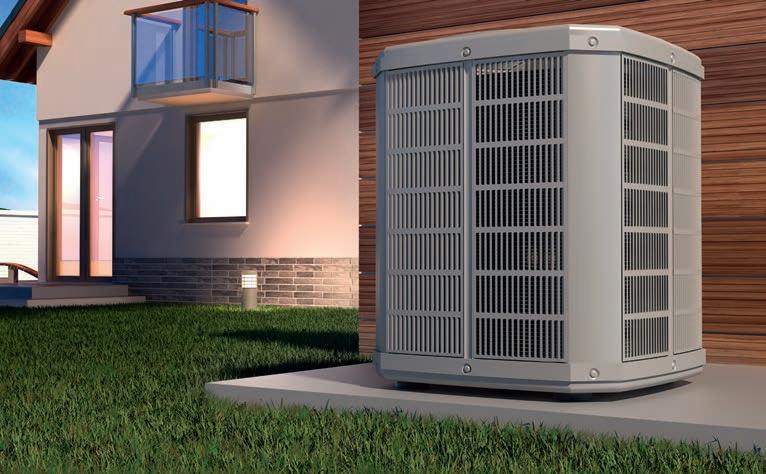
4 minute read
Home heating and energy saving
ENERGY: we are building the future
The decisions we make in heating and powering our homes will be felt for generations. We need to get it right.
Advertisement
How do you answer a perfect example of a six-and-a-halfyear-old’s logic: ‘Why did they paint all the houses black?’
Sitting in a hotel, with photographs of old Glasgow street scenes on the walls it had to be explained that in the ‘old days’ all the lovely light-coloured stone buildings she sees were once covered in a layer of soot.
‘What’s soot?’
Today’s weans are growing up with energy from the sun, water, wind, plants, soil and air as the norm.
The idea that the world was powered and heated by digging up combustible sedimentary rock from deep underground, then setting fire to it, will seem, one day, as shocking as sending children down mines to pull coal carts or up chimneys to clean the flues.
And from an adult, bill-paying point of view, it seems just as shocking that houses were once so poorly insulated that the heat and money were just frittered away.
When you build a home you are building the future – your grand, and great-grandchildren, will be playing in it one day and so might theirs. Thanks to today’s innovations they will be living in a far greener, cleaner time.
As we strive to reduce greenhouse gas emissions and our dependence on non-renewable energy we can call on advances in building design and materials to make new-build properties need far less energy to keep them warm and well-lit. We can improve dramatically the energy efficiency of older buildings through renovation.
It goes without saying that any newbuild designs come with top of the range insulation and opportunities for solar gain as standard, as do all SIPS and kit homes.
The method of providing heat then comes down to your choice and circumstances; with items like solar panels and heat source tailored to location, design and budget. And never forgetting that traditional Scottish favourite, wood, be it biomass systems or a log burning stove.
Sourcing your heat Air source heat pumps extract heat from outside air in the same way that a fridge extracts heat from its inside.
It is constantly being renewed naturally and can be used to heat radiators, under floor systems, convector heaters and hot water in the home.
An air-source heat pump can get heat out of air even when the temperature is as low as -15°c.
Ground source heat pumps are more efficient than air source ones because heat is transferred through the ground via the movement of water, and water has a greater capacity to hold heat, compared to air.
Heat from the ground is absorbed at low temperatures into a fluid inside a loop of pipe buried underground. The fluid then passes through a compressor that raises it to a higher temperature, which then heats the heating and hot water circuits of the house.
The cooled fluid passes back into the ground where it absorbs further energy from the ground in a continuous process as long as heating is required.
And here is where dirty old coal has the last laugh; the mines could once again heat our homes.
When they were abandoned, the mines filled with water, which is heated by geological processes, and the temperature remains stable year-round.
The Coal Authority has calculated that the constantly replenishing water within these mines could potentially be a large enough resource to provide all of the heating requirements for the coalfield areas. It could also be used as heat and energy for horticulture, manufacturing, and other purposes.
All those mines across the central belt, Ayrshire and Fife are just waiting to be tapped; test schemes in the northeast of England are being watched with interest.
Jeremy Crooks said, as head of innovation at the Coal Authority: ‘The abandoned coal mines in the UK present an enormous opportunity as a source of geothermal energy.’
Opposite from top: Keep heat in with good insulation; example air-source heat pump; example ground-source heat pump system.


Essential reading
www.energysavingtrust.org.uk www.homeenergyscotland.org
These two websites are a must, whatever your home building plans are.
Home Energy Scotland, funded by the Scottish Government, is a network of local advice centres covering all of the country.
Since its inception in 2008 it has helped save more than £1 billion on domestic energy bills.
If you use renewable energy to heat your home, you could get incentive payments from the UK Government. There is a wide range of support available to help you install, and even make money from, renewable technologies.
Available grants, loans and financial schemes depend on where you live in the UK. Here in Scotland, you could get an interest-free loan up to £17,500 to install home renewables.
Under the UK Government’s domestic Renewable Heat Incentive (RHI) scheme, you could receive quarterly cash payments over seven years if you install, or have already installed, an eligible renewable heating technology. RHI is confirmed for systems completed by 31 March 2022, then Clean Heat Grants follow.










